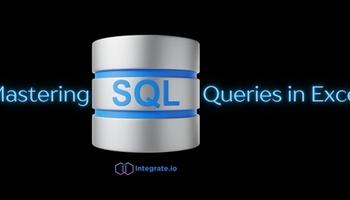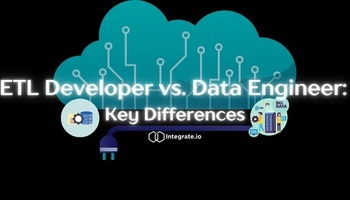Businesses of all sizes are increasingly relying on APIs to create competitive advantages, but many don't know the difference between API Management and API Gateways. This article will discuss what each solution does, how they can be used in conjunction with one another, and why it's essential to use both services when building an API strategy.
What is API Management?
API Management provides a way to manage the API lifecycle, including publishing and sharing APIs with your partners or developers. Additionally, it allows you control over who can access an API based on user roles and permissions. It also offers monitoring tools to track usage statistics of each API being published and plan for future changes in demand. This includes data about which APIs are most popular among external clients, what they do with them after they're published, where requests originate geographically, how many API calls per second each endpoint receives, etc. All this information is delivered into visually rich reports that allow users to assess their business needs quickly.
API Management components
API Management tools typically consist of a set of components that allow you to manage the entire lifecycle. This includes:
Metering
Application Programming Interfaces are generally published to support specific business needs. This may be for making certain features available to your partners or publishing information on an e-commerce site that you don't want to share with everyone (e.g., what products customers buy). Metering is the process of tracking API usage and then charging back clients accordingly based on the number of calls made against each endpoint.
Workflow Management
This provides a way to connect your API with other services and APIs, allowing you to orchestrate processes. For example, an amazon seller or e-commerce site may want its partners to use specific webhooks or make calls against certain endpoints to fulfill orders. Workflow management tools allow you the flexibility of creating multiple use cases or custom workflows that meet your business needs while maintaining control over which features are available at each stage of this process.
Developer self-service portals
Many companies today like Microsoft publish APIs and web services to outside partners or developers. They may do this to integrate with third-party services, use the company's data, or access some of their tools and features. They may want to give access to partners so they can build products on top of the business's platform or simply because it allows them to focus their internal development efforts.
Gateway
This is where clients receive requests and are routed through an authentication service for verification before being passed on to backend services, which then return their response to the client via the Gateway. The Gateway can also be used as a proxy or reverse-proxy server, allowing it to receive data from multiple external sources simultaneously.
Authentication Service
Responsible for verifying credentials such as username and passwords supplied by users attempting to connect with APIs published within API Management. Authorization Services determine whether those users have permission (based on rules defined in policies) and what level of access they should be granted (based on their user roles).
Policies
These are rules that control who has access to which APIs. They ensure the right users have the correct level of access and determine what resources a given client can see or do, such as create/read/update/delete operations against an endpoint.
Tags
Each API published within API Management is assigned tags, so it becomes easier to filter or limit requests (throttling) by type when examining usage reports, allowing companies to identify trends in demand quickly.
Monitoring Service
Provides accurate information on how your APIs are being used. This includes metrics such as the number of calls per second, the geographical location from which requests are coming in, and the most popular endpoints.
Why use an API Management Platform?
API Management provides a variety of benefits, including:
- A central location for monitoring APIs to ensure they are used securely and efficiently. It helps you monitor each API's usage so that clients don't unknowingly send too many requests or access an endpoint without the appropriate permissions. It also allows users to plan by getting alerts at critical milestones throughout the development process.
- Increased transparency between business departments and external clients using your APIs. Businesses gain valuable insight into how their APIs are used by providing additional tracking information such as who has accessed what features on which platforms via which types of devices, etc. This allows them to make informed decisions about product development and offer a better service to their clients, enhancing the overall customer experience.
- A way to easily manage partners, subscribers, and developers. API Management lets you share specific subsets of your APIs with particular users or groups without giving them access to all the data available in the system.
What is an API Gateway?
API Gateways provide a single point for developers to access an organization's APIs. They essentially sit between the client (i.e., the apps making the actual API requests) and all of your backend services like AWS, databases, or web service providers. An API gateway will handle things like authentication, load balancing, rate limiting (limiting latency), caching, etc.
Why Use an API Gateway for?
An API Gateway is a great way to create an API design that allows for scalable services. It provides the following benefits:
- Segmenting your backend into microservices architecture can make it easier to manage and maintain each service independently.
- You'll also have more control over access via rate limiting, authentication, etc.
- It can also help make your APIs more secure by ensuring that all requests go through a single entry point.
- You can increase API security by using third-party tools like AWS web application firewall to protect your API.
- Gives each client the optimal API endpoint. API Gateways can intelligently route requests to the appropriate backend service based on performance, traffic management, etc., ensuring that each client gets the best experience possible.
The Differences Between API Management and API Gateways
API Gateways are components of an overall API management solution.
While one provides a management solution foFr APIs, the other is a proxy service in front of your existing infrastructure.
Using both together can benefit organizations who want to improve their backend architecture while also improving the end-user experience when consuming company data or features via an external partner or application owner.
Businesses looking for more control over their entire platform will likely be interested in using both solutions together because they provide complementary functionality, which makes them ideal partners when building out any new product line with multiple APIs.
How Integrate.io Can Help
Integrate.io is a platform built with API management and API analytics in mind. With the Integrate.io platform, you'll be able to integrate, manage, and connect all of your applications in one place.
Integrate.io can manage all of your data sources via one interface with no code required. You'll be able to monitor each service from a single dashboard or developer portal while gaining insight into usage patterns across different clients and devices. If your business is looking for the best way to manage its APIs with a powerful, flexible solution that will allow you to scale as needed without any code or downtime, start your free 7-day trial with Integrate.io here.










